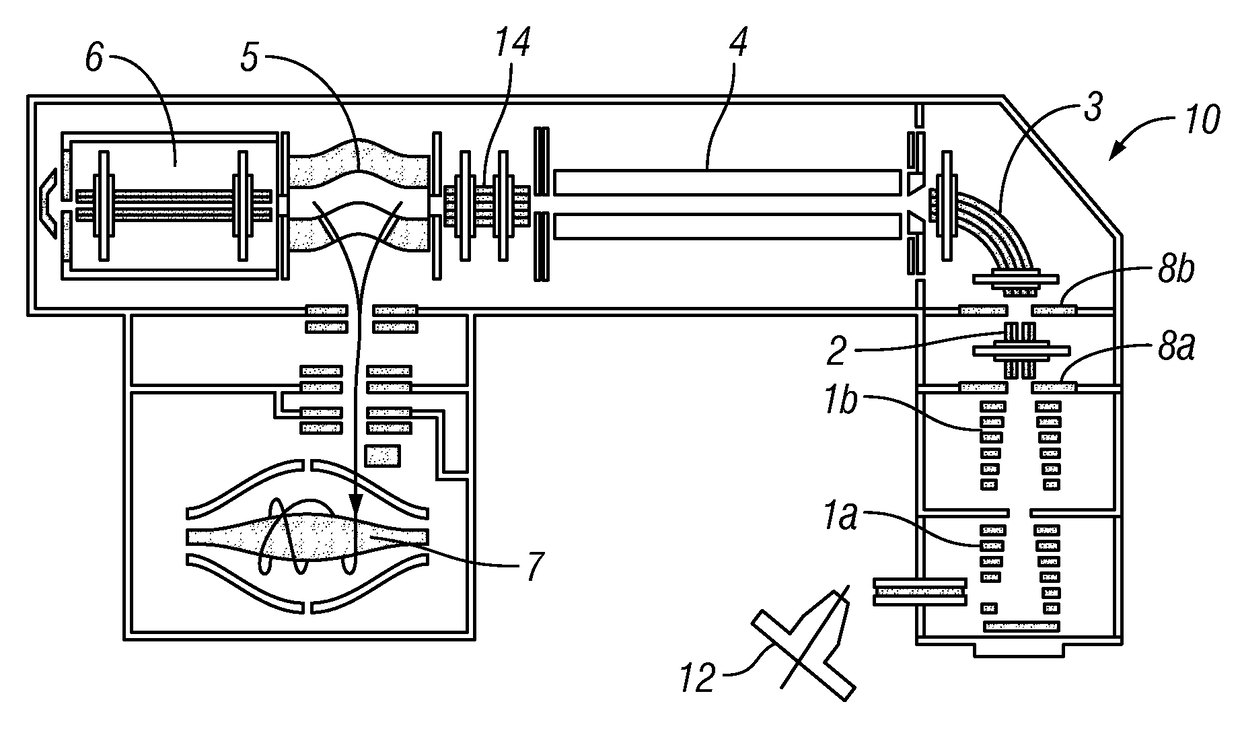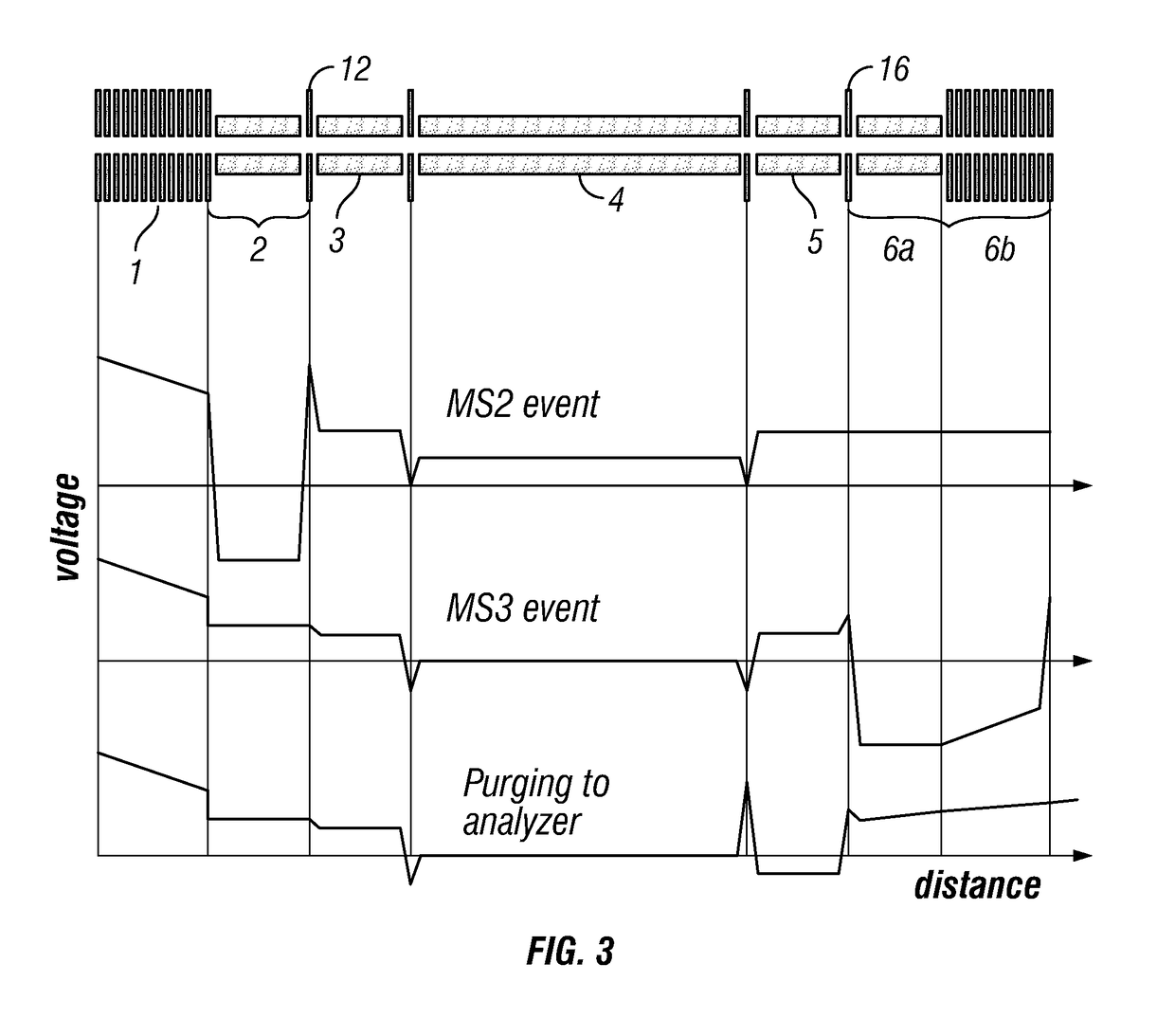Method and apparatus for mass spectrometry of macromolecular complexes
a macromolecular complex and mass spectrometry technology, applied in the field of mass spectrometry, can solve the problems of unreliable approach, no dissociation of native protein complexes (i.e., ejection of monomer subunits), and no dissociation of native protein complexes, etc., to achieve high efficiency and high resolution , the effect of efficient compression of ion packets
- Summary
- Abstract
- Description
- Claims
- Application Information
AI Technical Summary
Benefits of technology
Problems solved by technology
Method used
Image
Examples
Embodiment Construction
[0053]Preferably, the introduced complex ions are (intact) protein complex ions. Preferably, the complex ions are non-covalently bound protein complexes, preferably in a native state. The introduced complex ions may comprise 2, 3, 4, 5, 6, 7, 8, 9, or 10 or more monomers, e.g. protein monomers. Advantageously, the complex ions may be decamers (10 monomers) or higher order complexes (e.g. tetradecamers, having 14 monomers). Accordingly, preferably, the monomer subunit ions are protein ions. Furthermore, preferably, the first fragment species are peptide level fragments (i.e. peptide fragments). Whilst the invention is illustrated herein with respect to protein complexes, it should be understood that the invention is not limited to such and may be applied to other macromolecular complex ions. Other macromolecular complexes may include: DNA-protein, RNA-protein, antibody-drug conjugates, protein-ligand complexes etc.
[0054]Preferably, the complex ions have a mass-to-charge ratio of leas...
PUM
 Login to View More
Login to View More Abstract
Description
Claims
Application Information
 Login to View More
Login to View More - R&D
- Intellectual Property
- Life Sciences
- Materials
- Tech Scout
- Unparalleled Data Quality
- Higher Quality Content
- 60% Fewer Hallucinations
Browse by: Latest US Patents, China's latest patents, Technical Efficacy Thesaurus, Application Domain, Technology Topic, Popular Technical Reports.
© 2025 PatSnap. All rights reserved.Legal|Privacy policy|Modern Slavery Act Transparency Statement|Sitemap|About US| Contact US: help@patsnap.com



